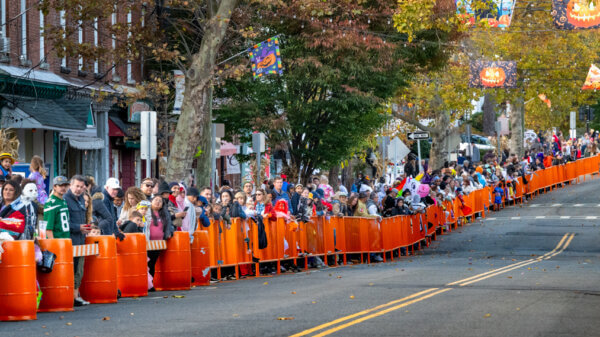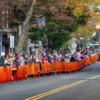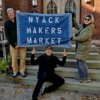Chrystenah, named in honor of the mother of its owners, was among the most beautiful and fastest steamboats on the lower Hudson River during the Gilded Age. Built in Nyack by William Dickey at the end of the Civil War, Chrystenah maintained a daily route between Peekskill and New York City, with multiple stops along the way for forty years. Known for both efficiency and grace, the steamboat also hosted river excursions. Its Fourth of July trips to Staten Island and the New York City harbor became cherished annual events.
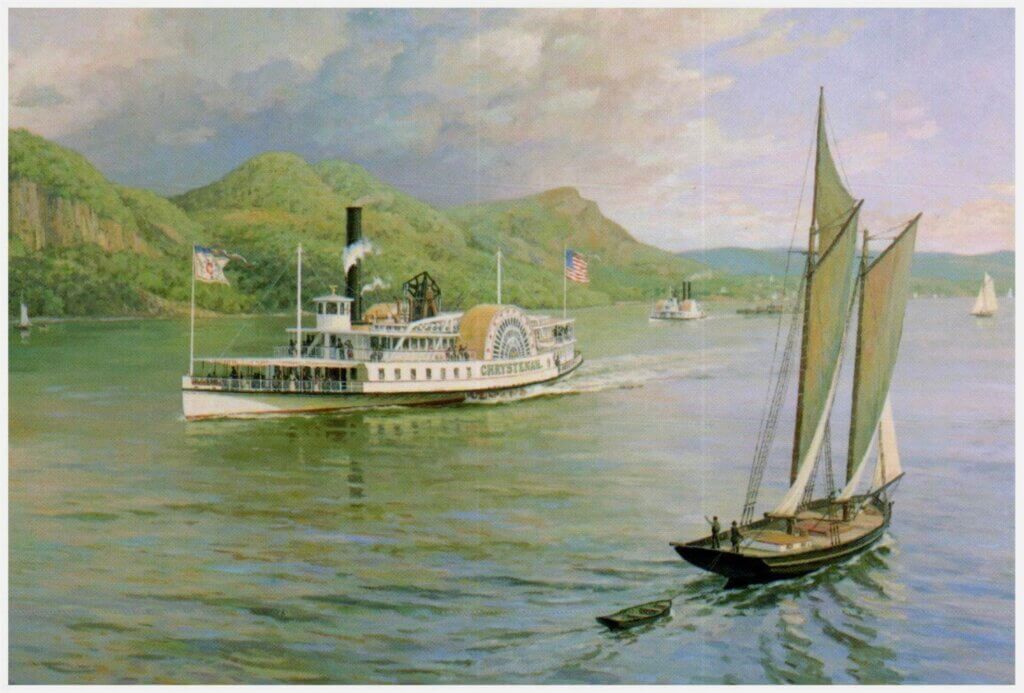
Imagine hearing Chrystenah’s distinctive whistle as it rounds Hook Mountain to dock in Nyack. With your $0.50 round-trip ticket in hand, you’d board under blue skies scattered with soft clouds. All aboard for the history of Chrystenah!

A Scenic Commute
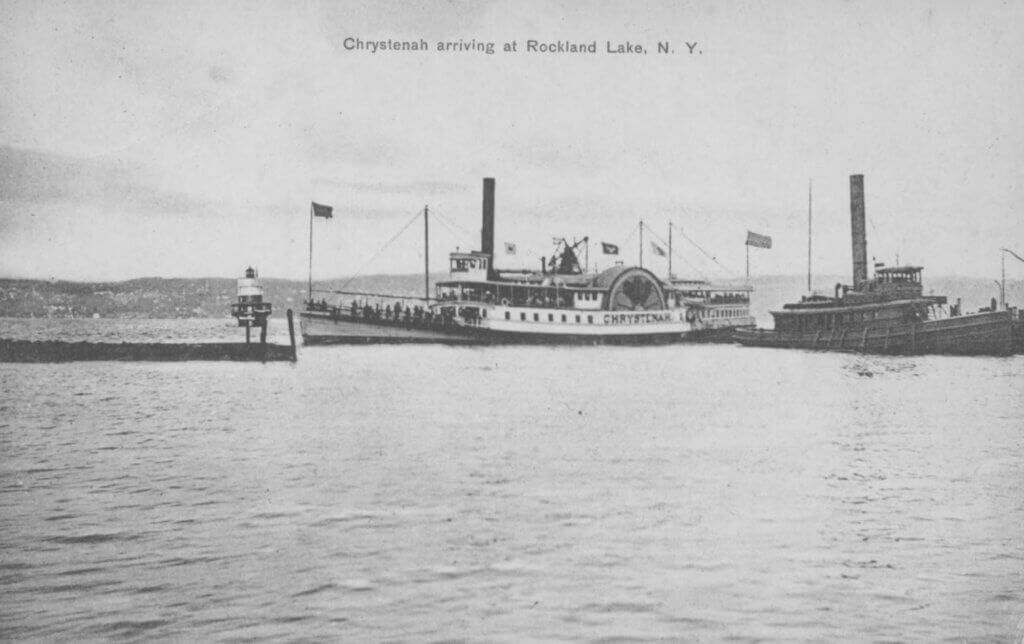
Over the years, the Chrystenah’s stops and schedules shifted to meet local demand. The core route began in Peekskill at 6:30 a.m., stopping at Verplanck’s Point, Grassy Point (now Stony Point), Haverstraw, Rockland Lake, Nyack (7:55 a.m.), Tarrytown, and Yonkers. In its early days, it also made stops at Tompkins Cove, Ossining, Dobbs Ferry, and Englewood.
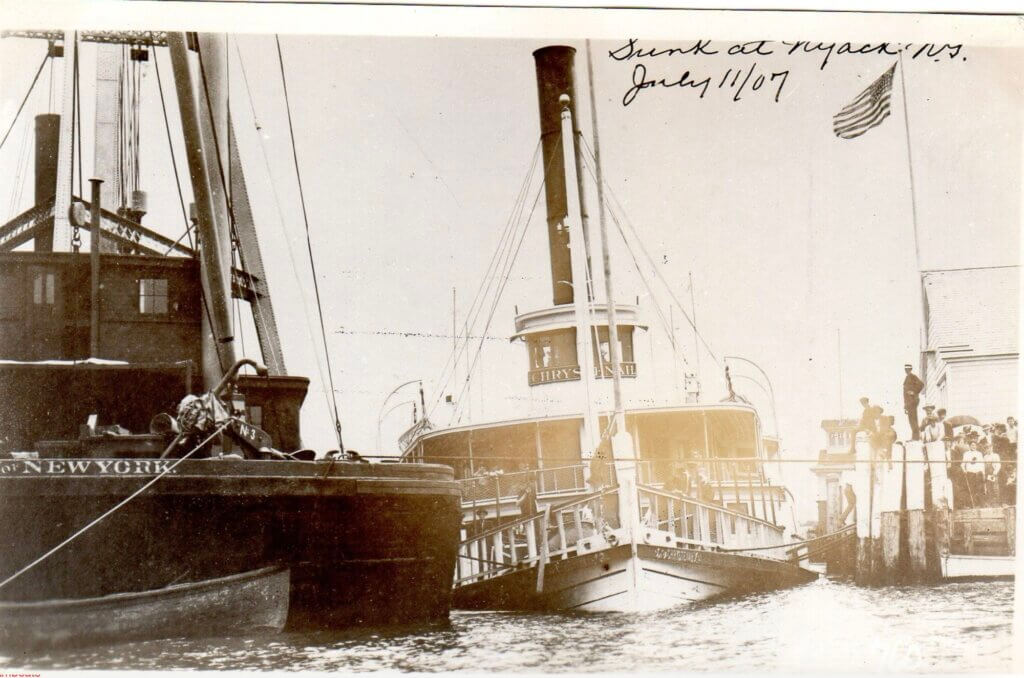
While Chrystenah occasionally docked in Nyack, it more often met the Nyack Ferry mid-river to transfer passengers via a gangplank. The shallowness of docks in Nyack and Tarrytown posed challenges, leading to incidents like the 1860s mishap when the steamboat struck a submerged pile near Main Street in Nyack. After repairs in Hoboken, the Nyack pier was extended by 50 feet to prevent further issues.
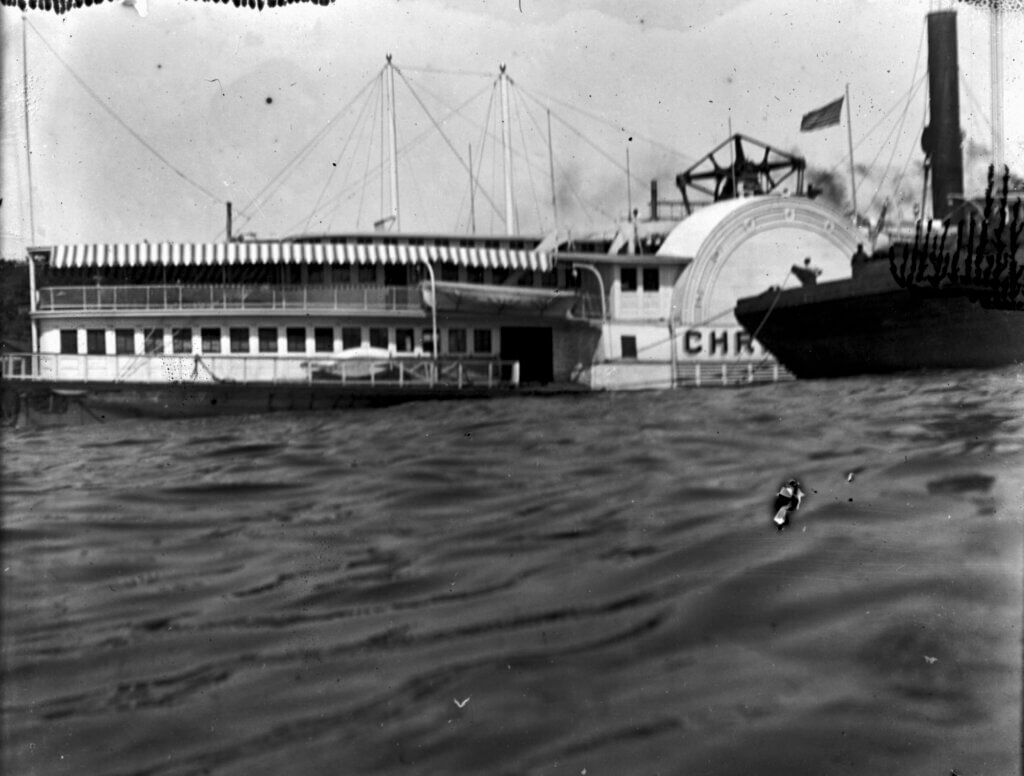
The trip from Nyack to New York City took about 90 minutes, with stops at the Albany Day Line pier at West 22nd Street and the Troy Line pier at West Tenth Street. The return trip began around 3:45 p.m. Chrystenah’s punctuality became legendary. While winter ice halted service, the steamboat’s spring debut, typically in April, was eagerly anticipated.
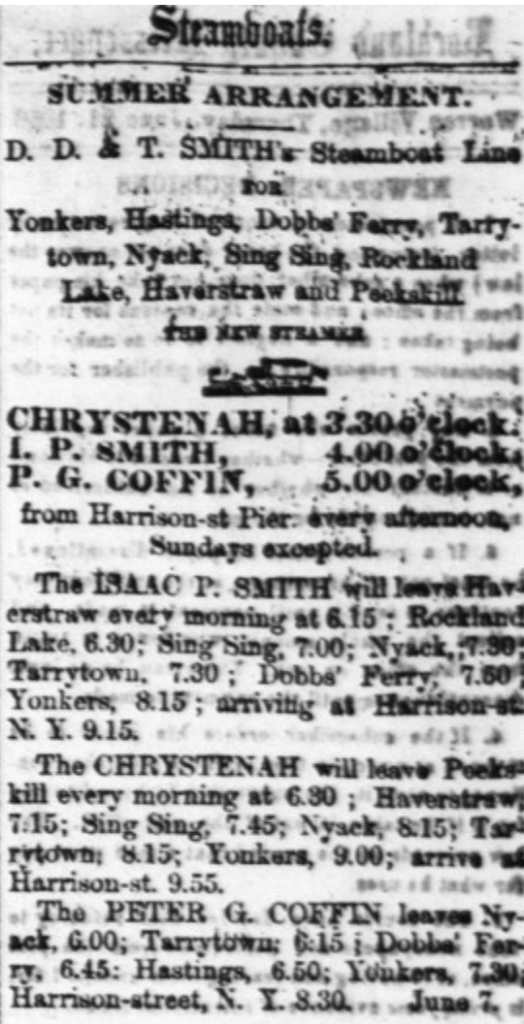
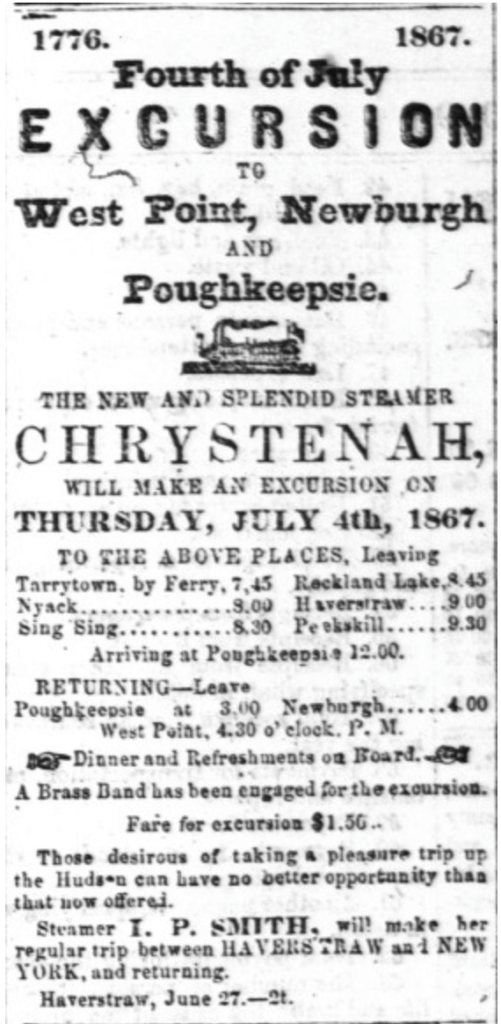
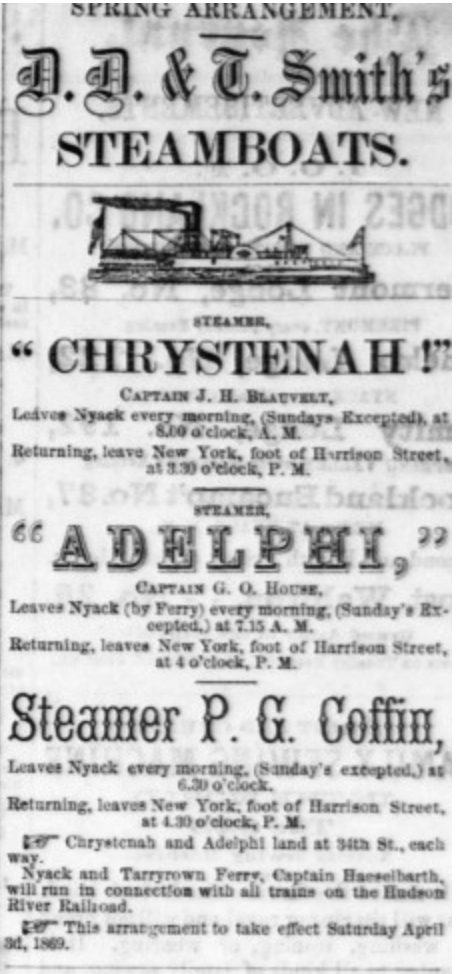
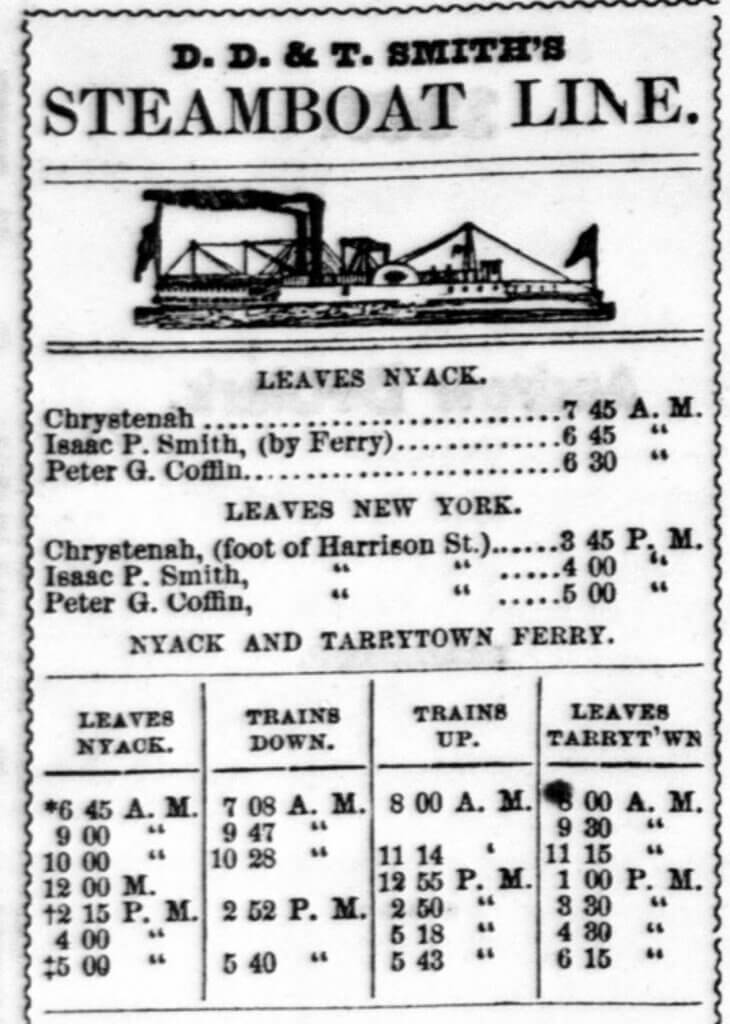
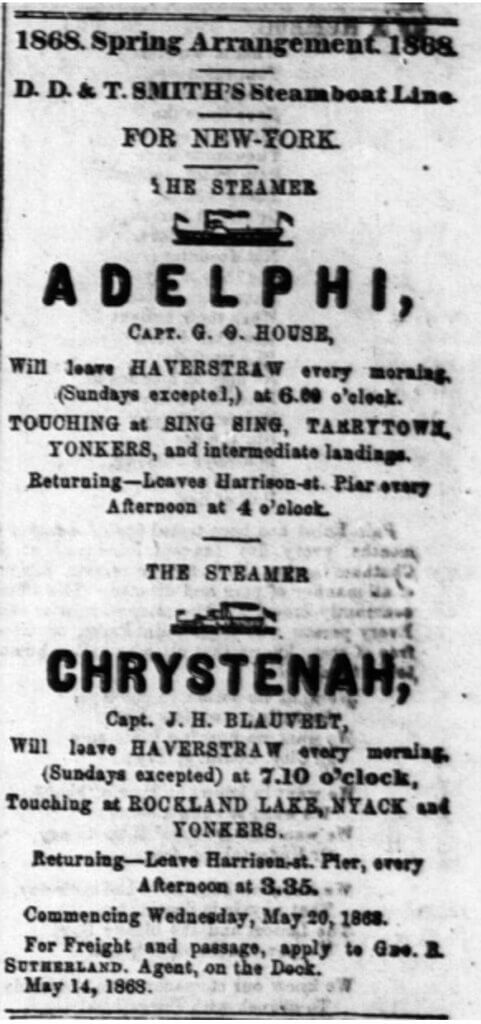
Steamboat schedules during the early years in the Rockland Country Journal
The Nyack Steamboat Company
The Nyack Steamboat Company emerged from the vision of local investors, including John Green and the Smith brothers. Their first venture, the steamboat Orange, launched in 1826 and proved to be a success. Responding to growing demand for faster and larger vessels, the Smith brothers expanded the company’s operations, creating steamboats such as the Arrow, the Adelphi, and ultimately Chrystenah.
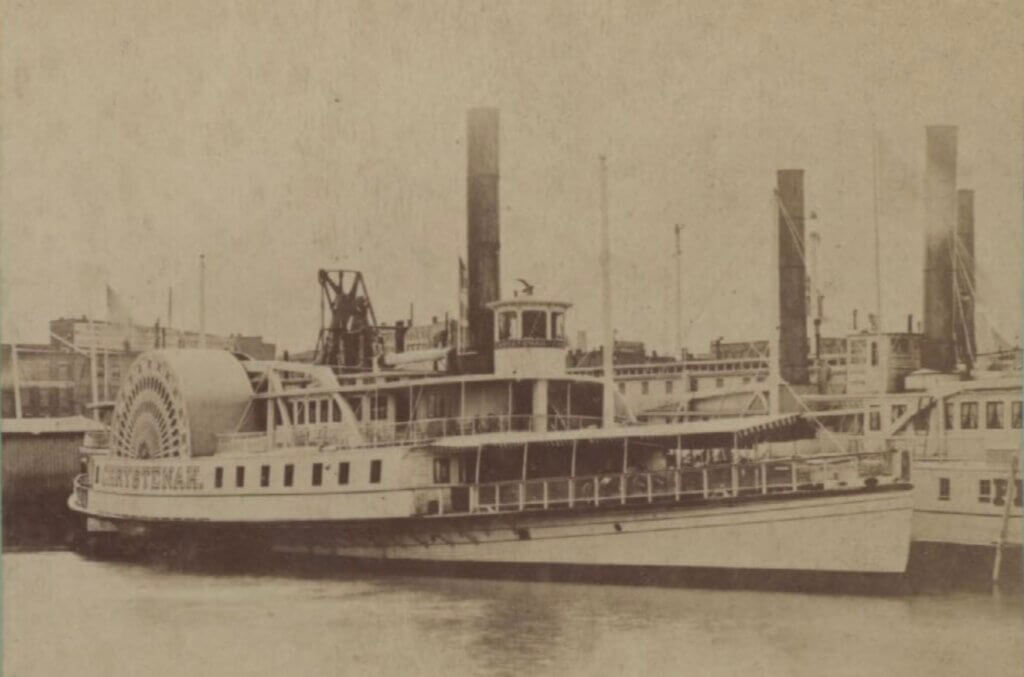
The Smith Brothers
Four brothers, Isaac P., David D. (D.D.), Tunis, and Abram P. Smith, controlled the Nyack Steamboat Company, with D.D. managing daily operations. The Smiths named the Chrystenah after their mother as a tribute, even placing a portrait of her at the top of the grand stairway on the boat. The portrait, housed in an oval frame, added a personal and sentimental touch to the vessel’s elegant interior.
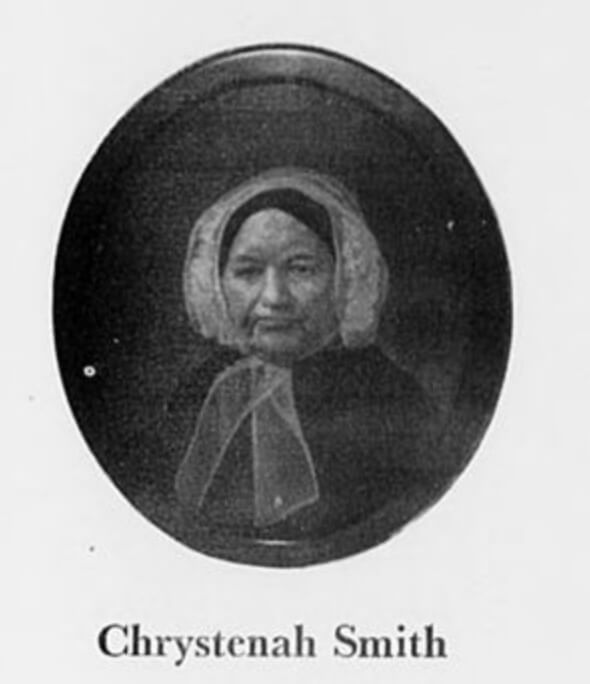
The Smith brothers were also entrepreneurs, running a general store on Burd Street that offered ferry passengers free tickets to attract business. Later, they converted the store and D.D.’s house into the Smithsonian Hall and Hotel. Burd Street became a bustling hub, so much so that it’s a wonder Nyack wasn’t renamed Smithville.

Unfortunately, D.D. misjudged the importance of the railroad. His opposition to extending the line to Nyack’s downtown led to a terminus far from the docks when it opened in 1870, marking the beginning of the steamboat company’s decline. Coupled with overextension during the Panic of 1873, the company’s finances faltered. The Rockland County National Bank, controlled by the Smiths, collapsed, leading to the loss of their steamboat company and personal mansions. Eventually, A.M.C. Smith (unrelated) purchased the company, renaming it the North River Steamboat Company.
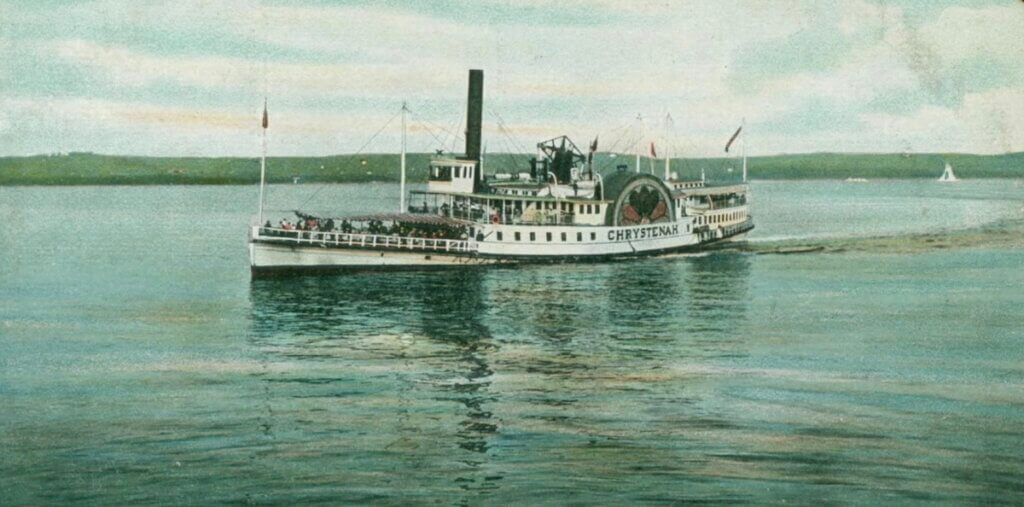
William Dickey, Shipbuilder
Born in Nyack in 1808, William Dickey was a lifelong resident and accomplished shipbuilder. Over his career, Dickey managed boatyards, built over 50 sailing vessels, and constructed notable steamboats, including the Swiftsure, the Neversink, and Chrystenah. His craftsmanship extended beyond shipbuilding—he co-founded the Rockland Female Institute, served on the Nyack Board of Education, and worked as Inspector of Buildings in New York City. Dickey’s legacy includes his most famous creation, Chrystenah.
The Chrystenah
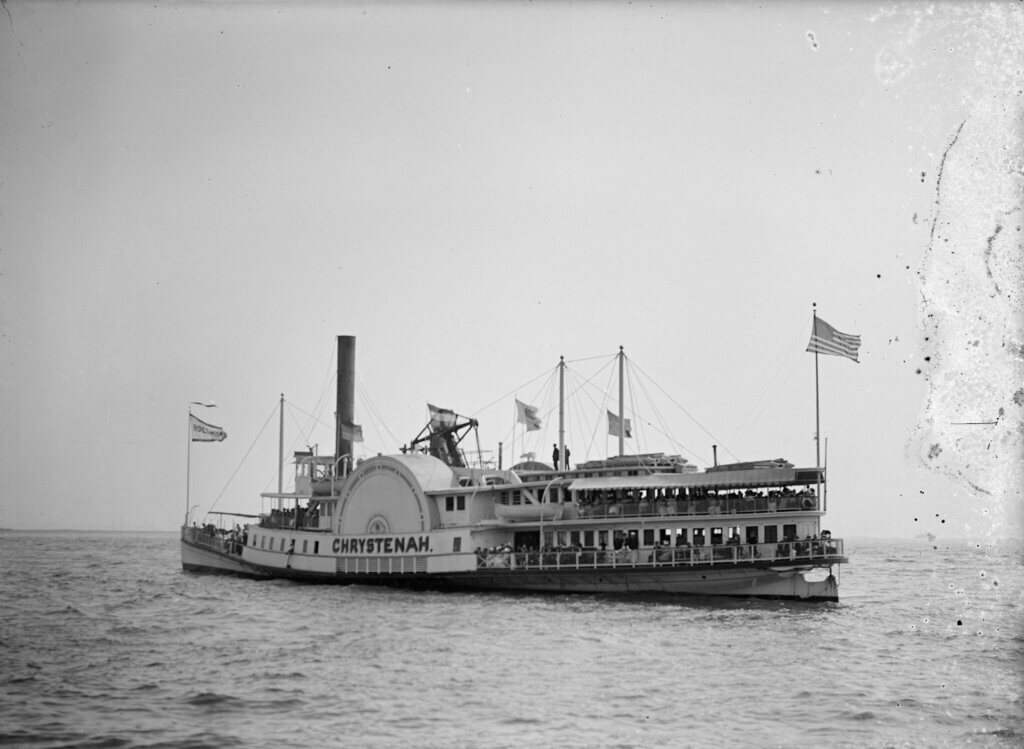
Built at Nyack’s Main Street docks in 1866, Chrystenah was a masterpiece. Measuring 205 feet with a draft of 4.5 feet, it featured a “due and return” tubular boiler for efficiency and paddle wheels 28.5 feet in diameter, capable of up to 25 revolutions per minute. The sleek exterior was matched by its luxurious interior.
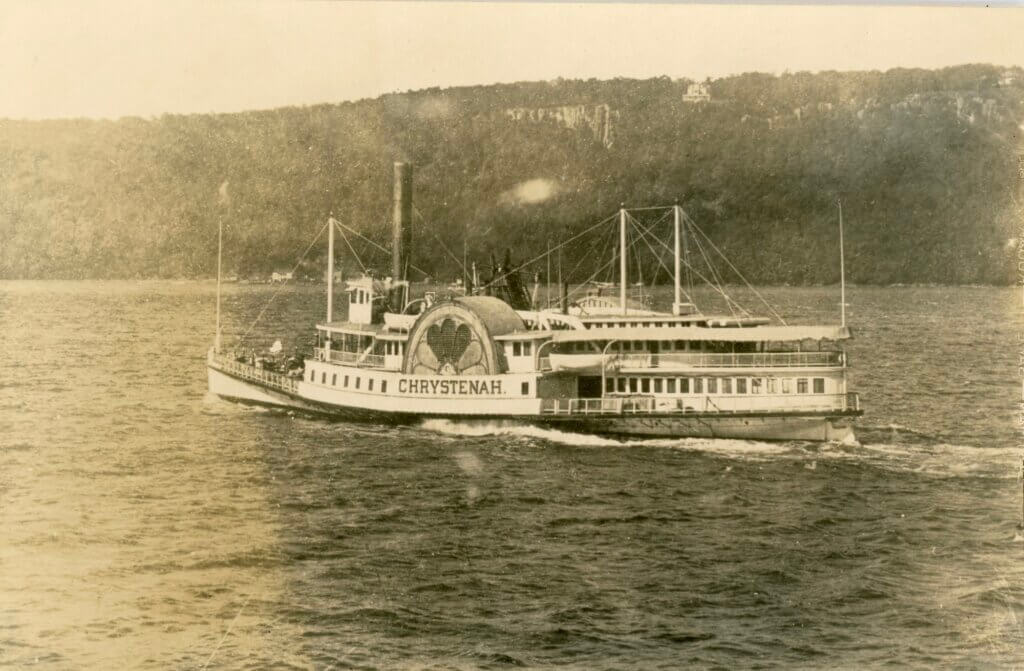
The grand stairway leading to the upper deck was crafted from rosewood, mahogany, and black walnut. On either side of the staircase stood statuettes of Don Cesar and Don Juan, adding a touch of theatrical elegance. The grand salon spanned 120 feet and was richly adorned with gilded cornices, nature and naval paintings, stained glass lights, silk damask curtains, velvet carpets, antique furniture, large mirrors, and marble-topped heaters. A separate dining room offered meals during afternoon trips, and a cozy women’s cabin was located on the main deck.
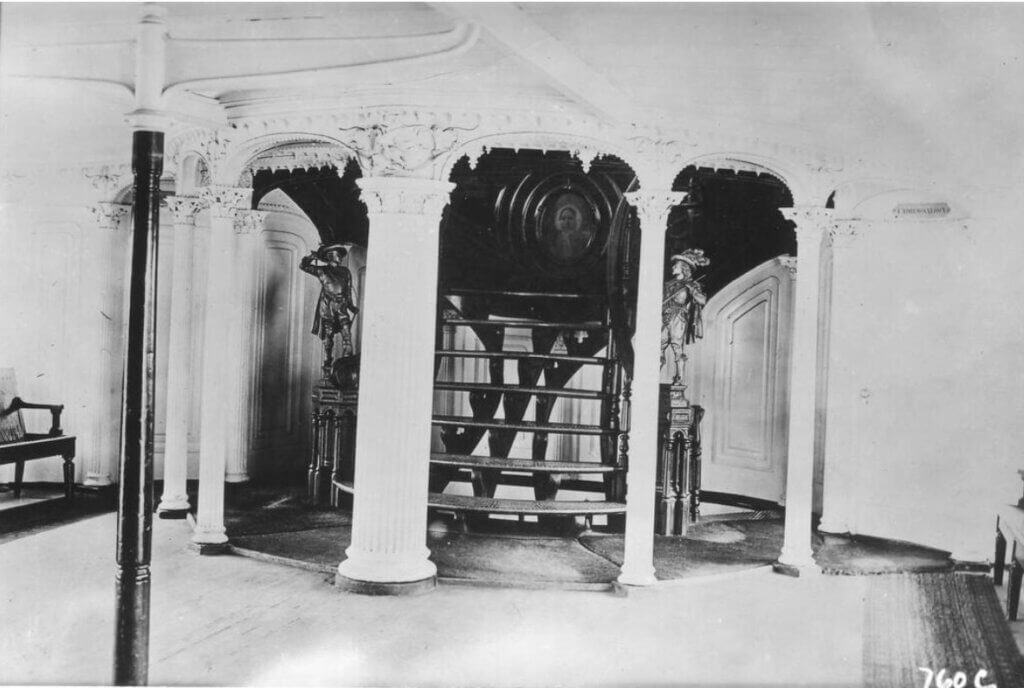
The boat’s namesake, Chrystenah Demarest Smith, was 83 years old when her sons brought her aboard to view the completed vessel. Her portrait, though its artist remains unknown, was a cherished centerpiece of the boat’s decor.
Excursions and Special Events
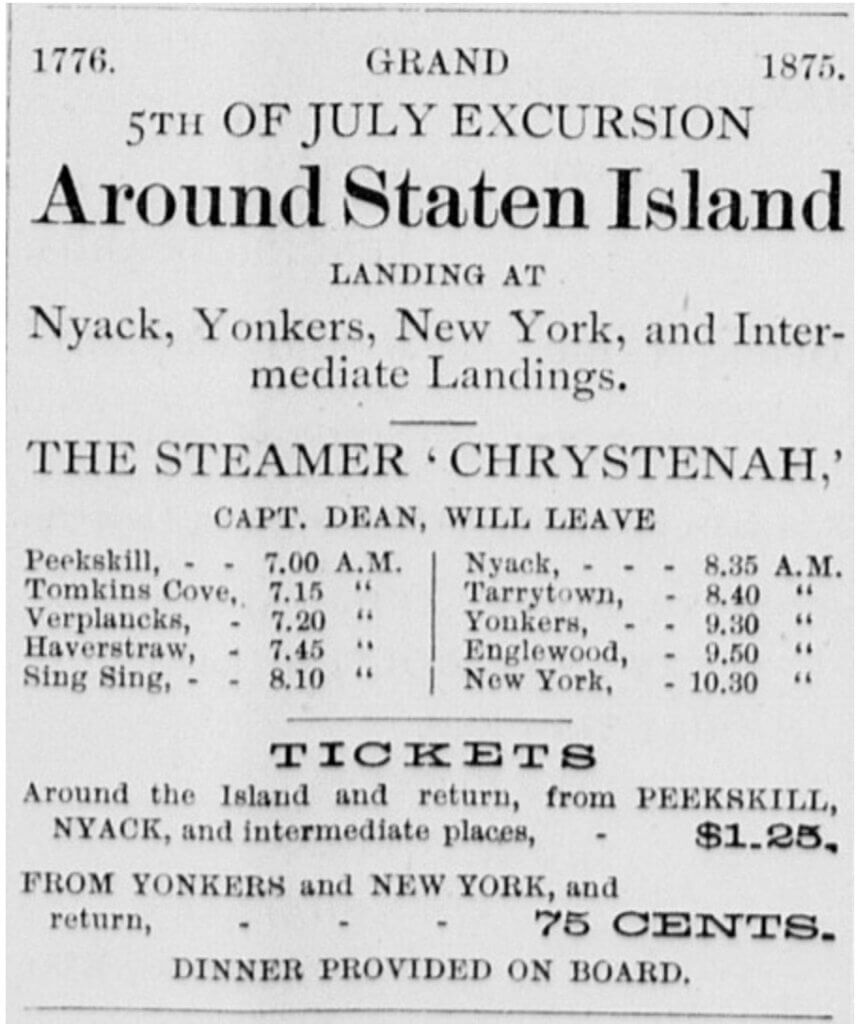

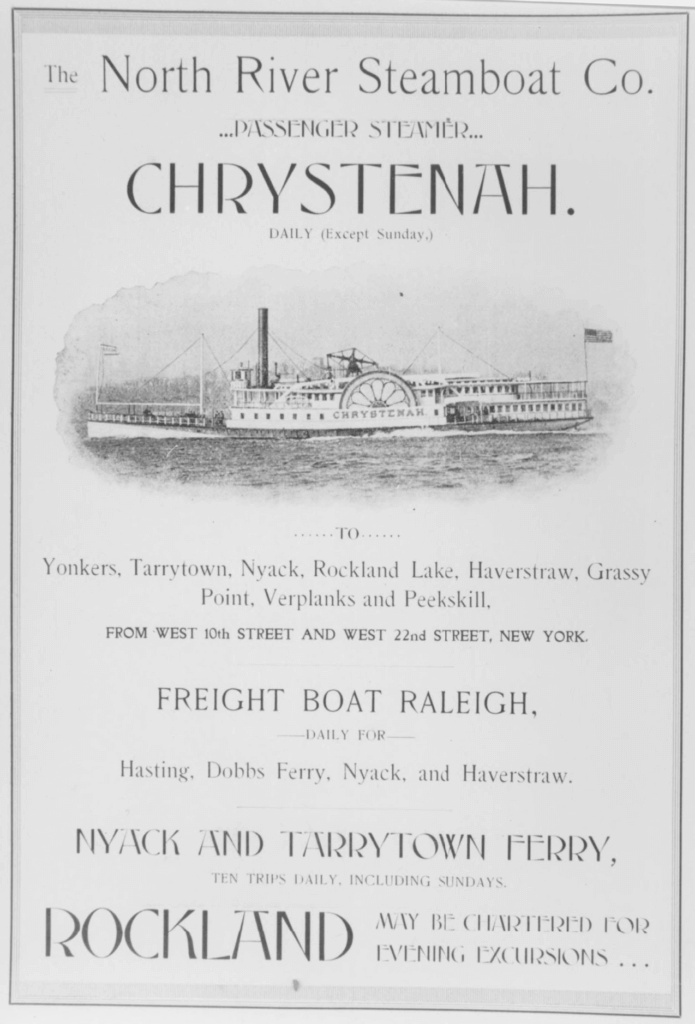
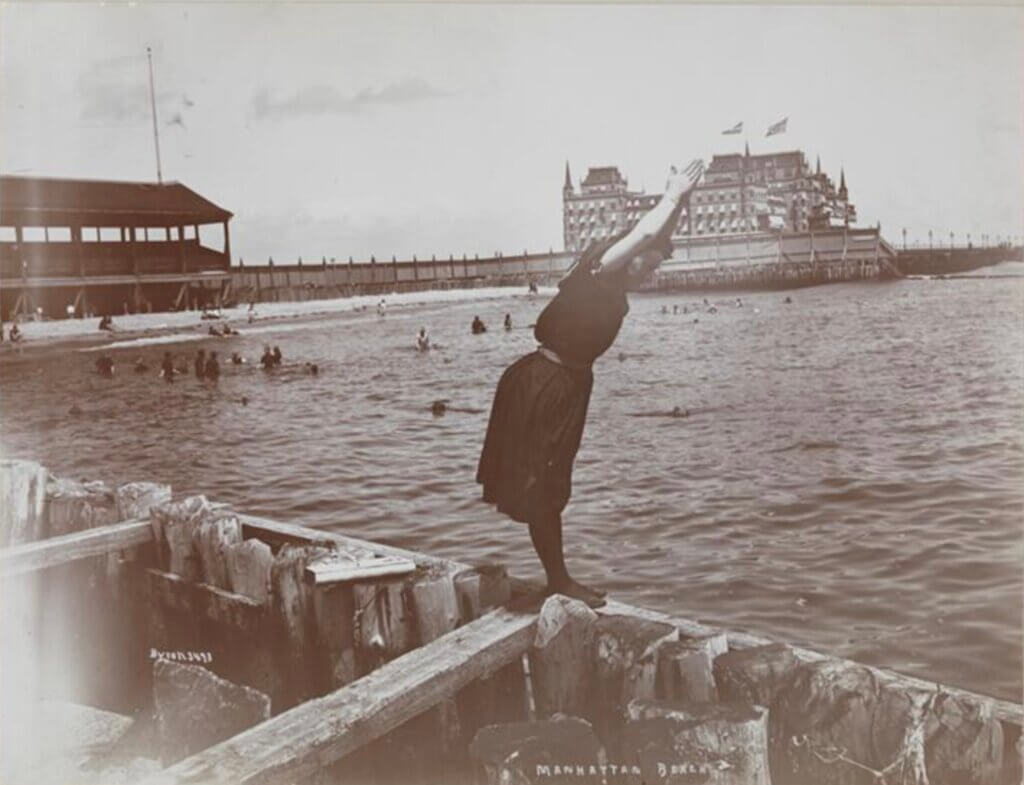
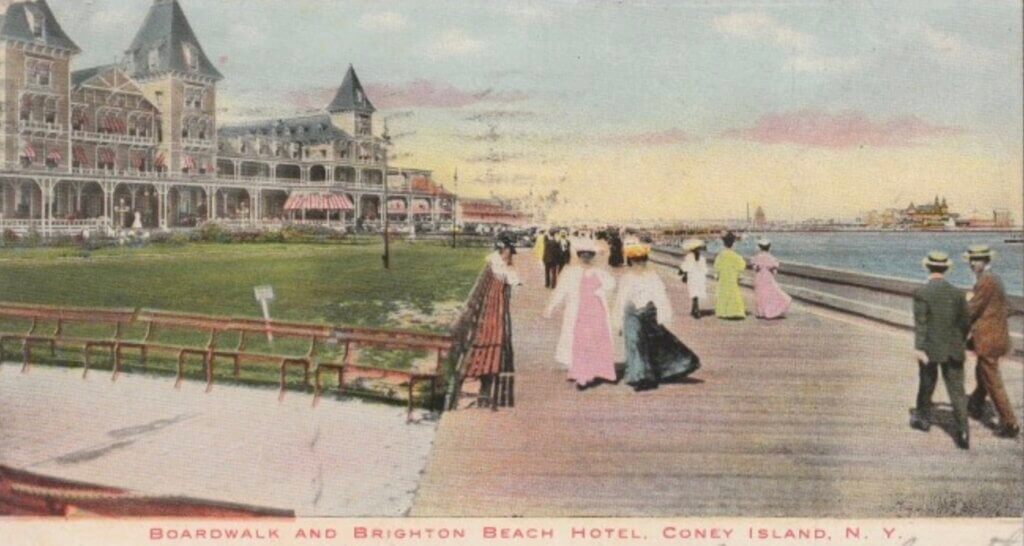
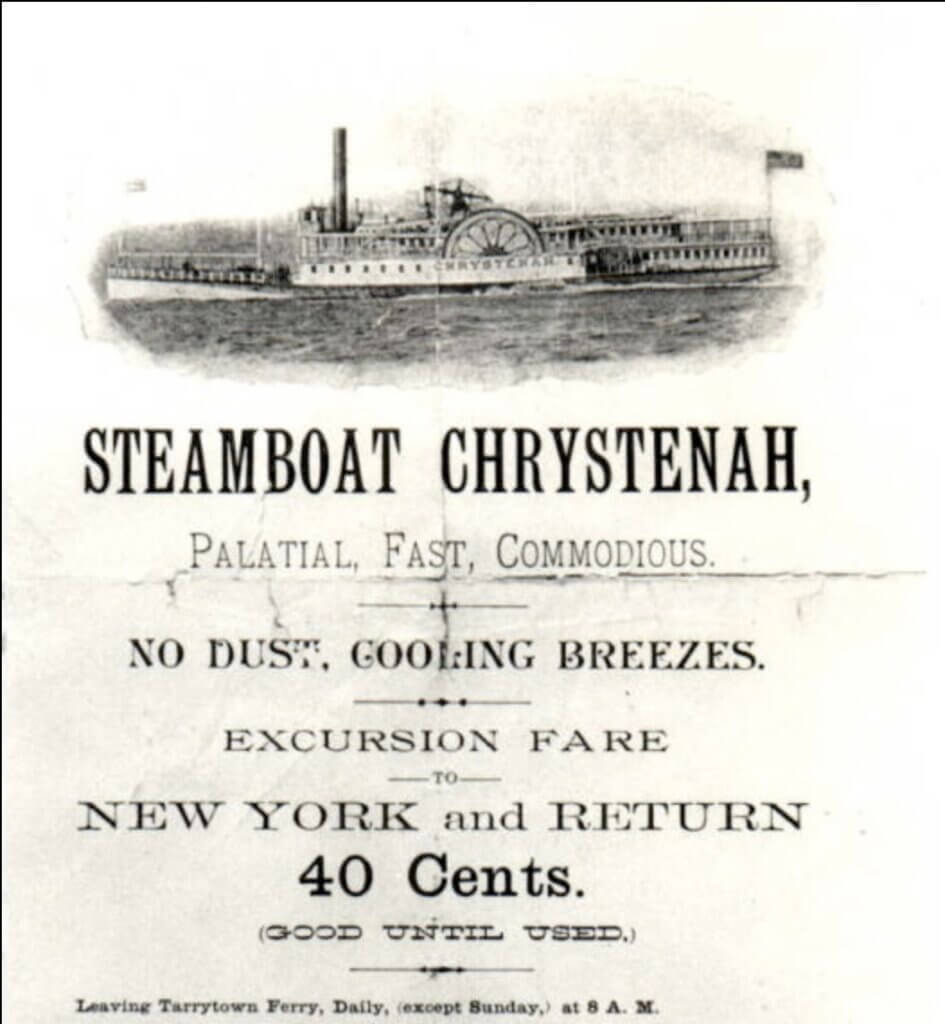
Some examples of excursion schedules and images of Coney Island during the Gilded Age.
Beyond its commuter service, Chrystenah hosted popular excursions. The July 4th trips, featuring live music and stops at Staten Island or Coney Island, became a summer tradition. Special events included the 1899 “Dewey Day” regatta and trips to the American Institute Fair and Central Park. These excursions added vibrancy to Nyack’s bustling waterfront.
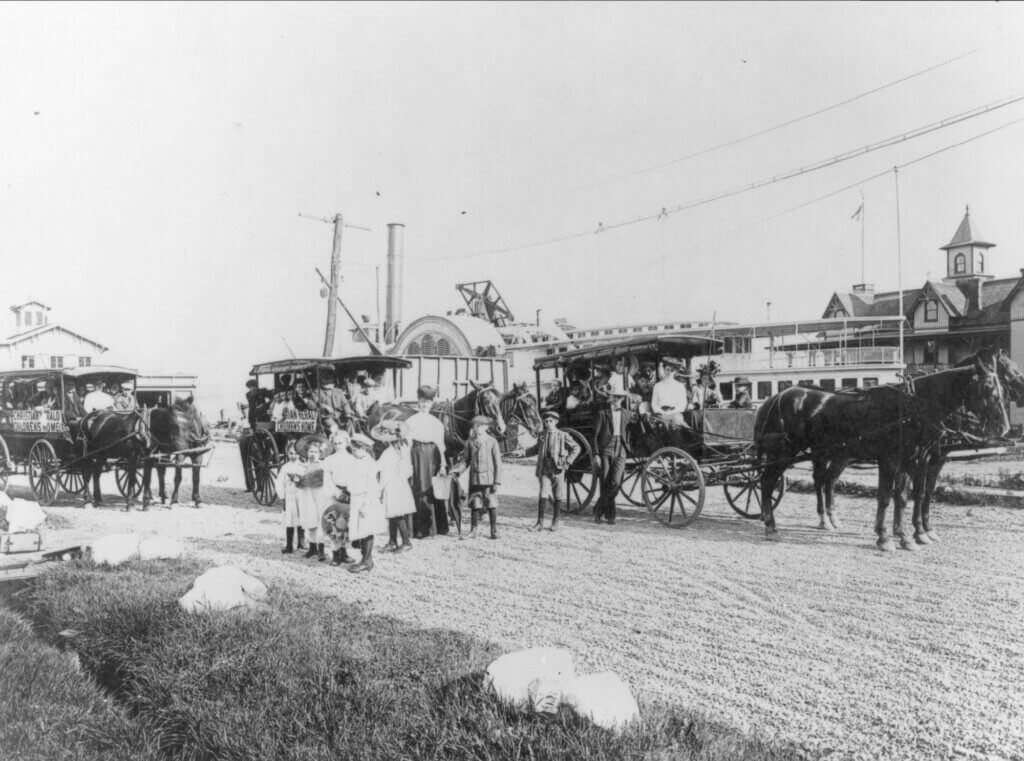
Freight was also an important part of Chrystenah’s operations. It carried goods like beer, which often presented challenges. On hot days, beer kegs occasionally exploded, creating quite a scene on Burd Street as wagons struggled to haul the heavy loads uphill.
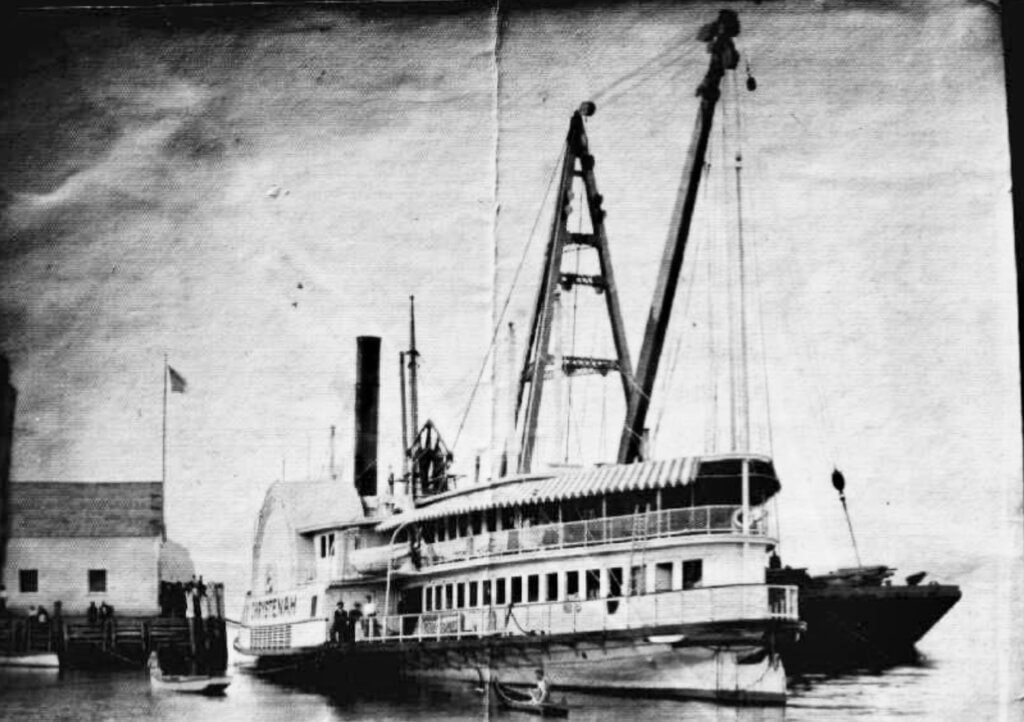
The Decline of an Era
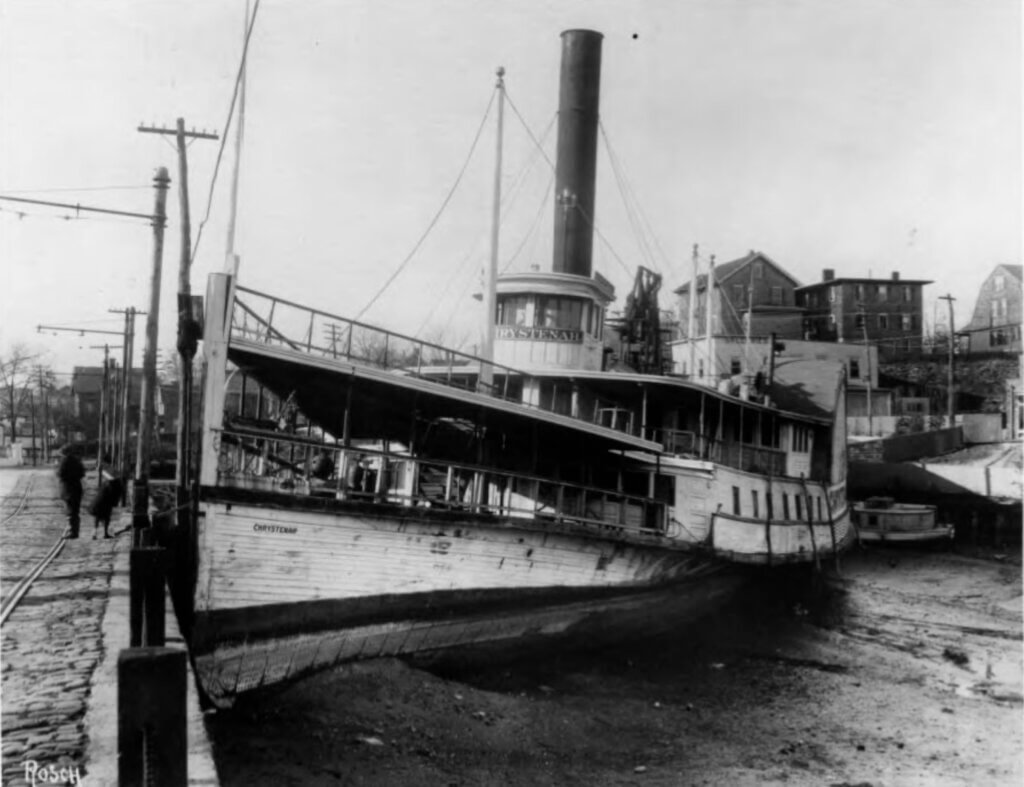
With the rise of automobiles and trains, steamboat travel waned. After 1907, Chrystenah was sold and repurposed for excursions and baggage transport. A severe storm in 1920 damaged the vessel, leading to its sale for $1. It was ultimately dismantled, with its hull run aground on Long Island.
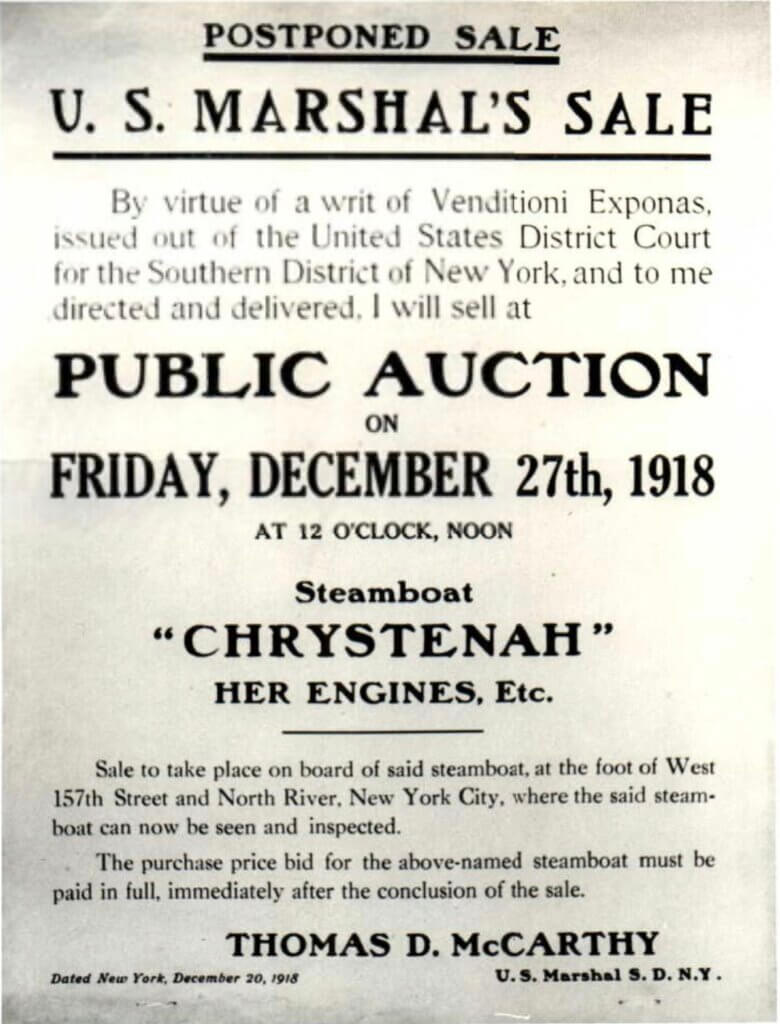
Legacy
For nearly 40 years, Chrystenah was a symbol of elegance, efficiency, and community. It offered Gilded Age travelers a luxurious and scenic passage on the Hudson River. Truly, Chrystenah reigned as the Queen of the lower Hudson River during its golden era.
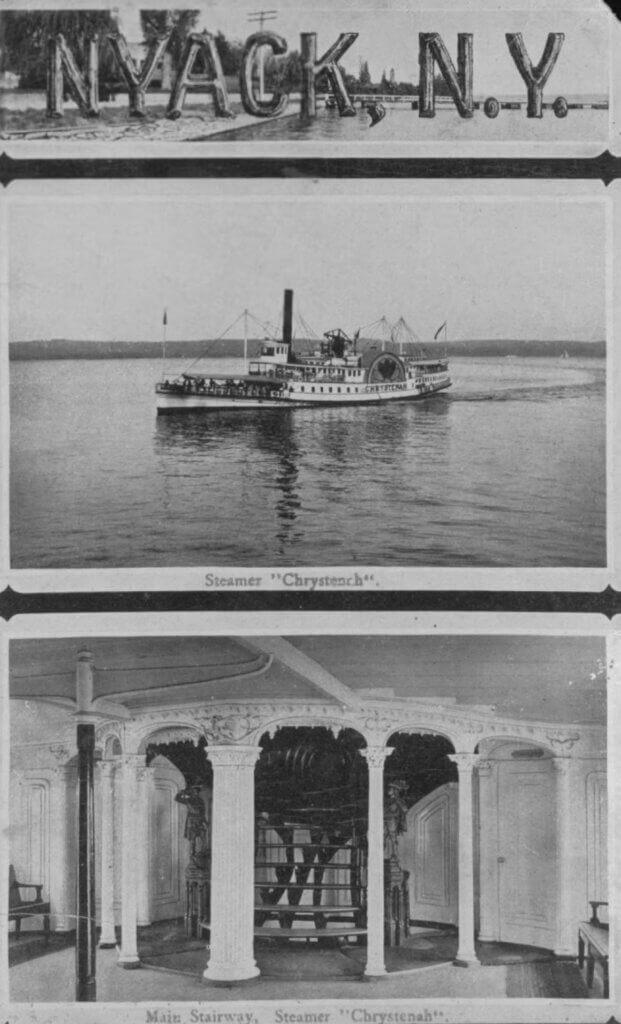
Mike Hays lived in the Nyacks for 38-years. He worked for McGraw-Hill Education in New York City for many years. Hays serves as President of the Historical Society of the Nyacks, Vice-President of the Edward Hopper House Museum & Study Center, and Upper Nyack Historian. Married to Bernie Richey, he enjoys cycling and winters in Florida. You can follow him on Instagram as UpperNyackMike.
Editor’s note: This article is sponsored by Sun River Health and Ellis Sotheby’s International Realty. Sun River Health is a network of 43 Federally Qualified Health Centers (FQHCs) providing primary, dental, pediatric, OB-GYN, and behavioral health care to over 245,000 patients annually. Ellis Sotheby’s International Realty is the lower Hudson Valley’s Leader in Luxury. Located in the charming Hudson River village of Nyack, approximately 22 miles from New York City. Our agents are passionate about listing and selling extraordinary properties in the Lower Hudson Valley, including Rockland and Orange Counties, New York.




